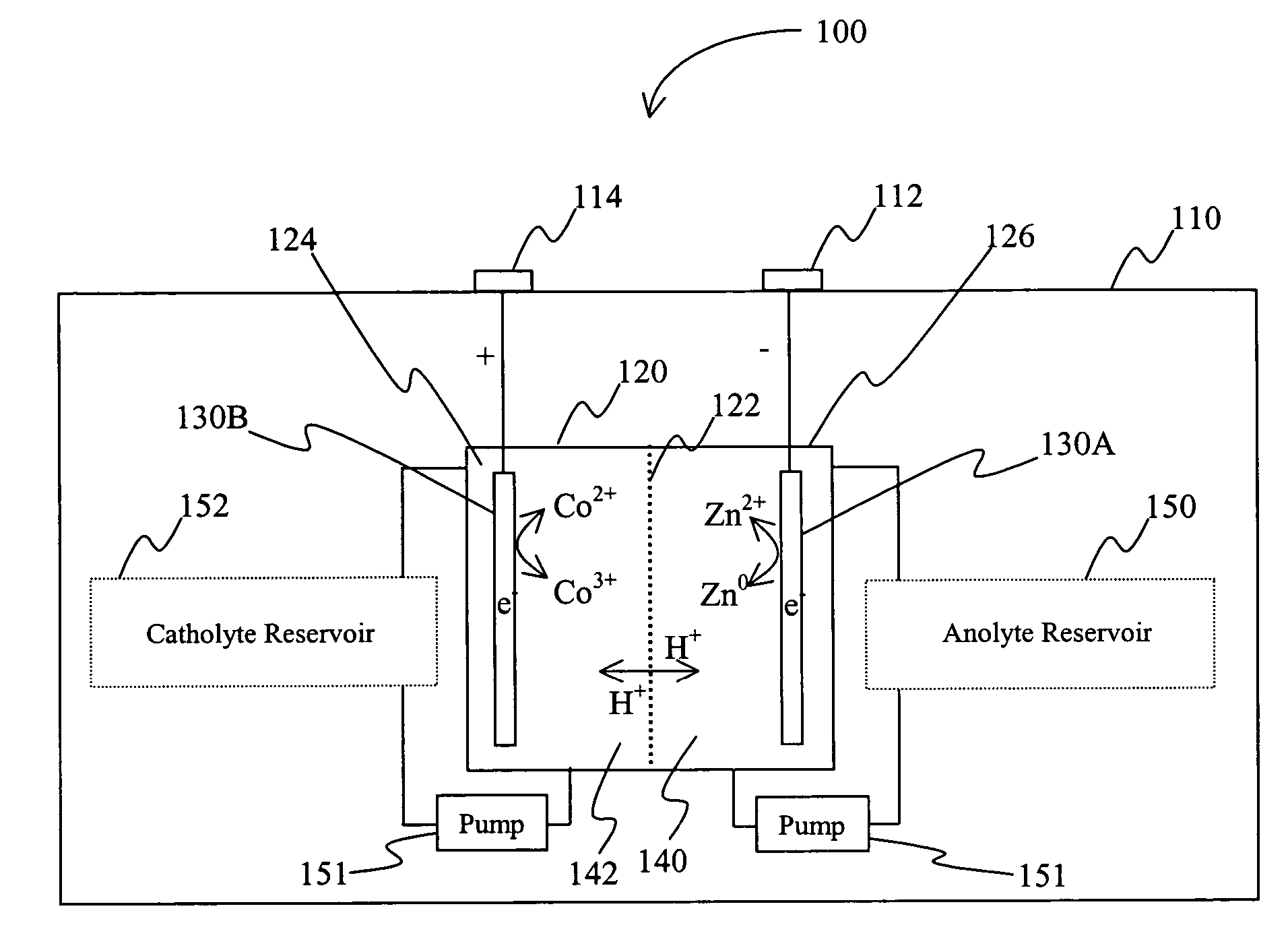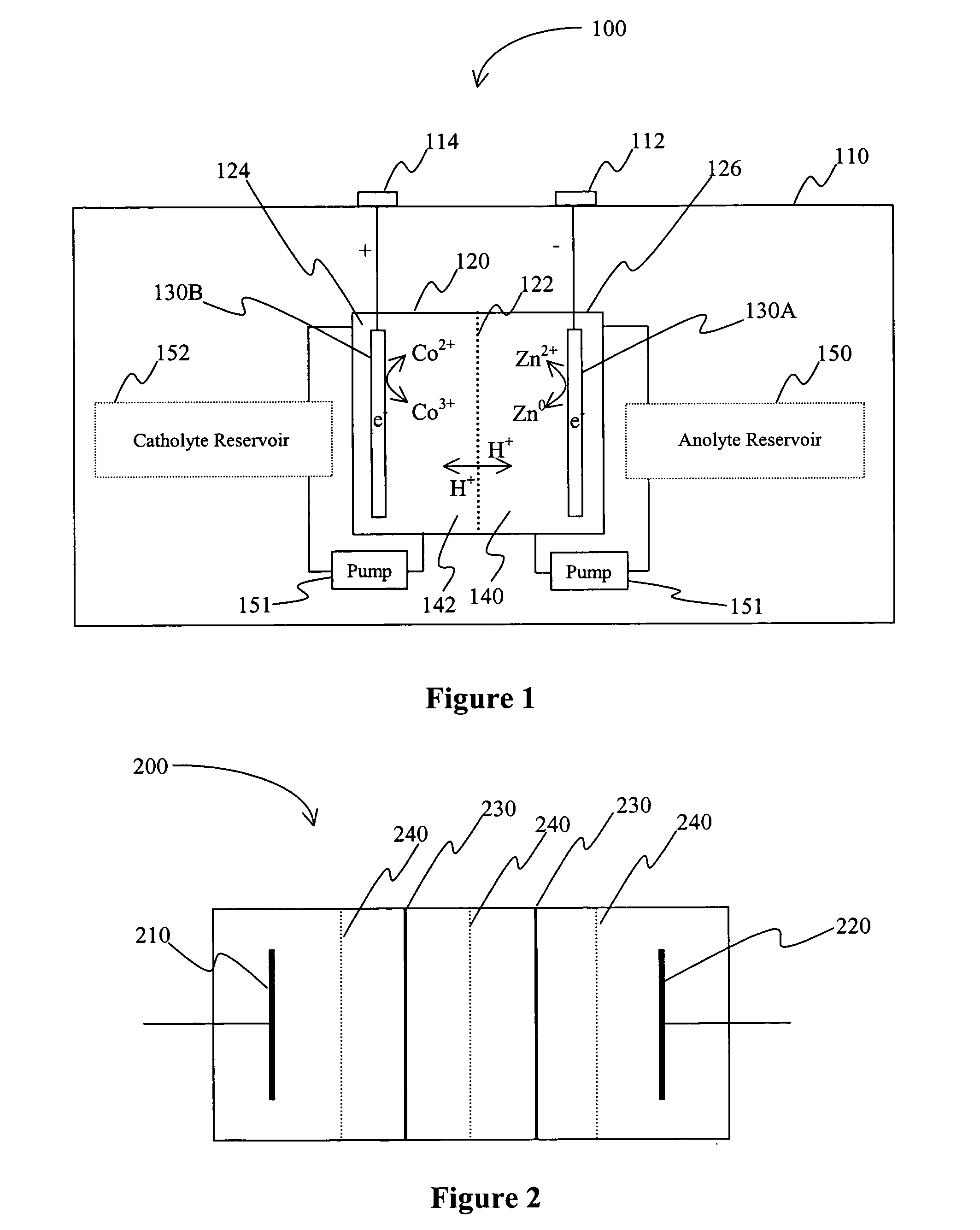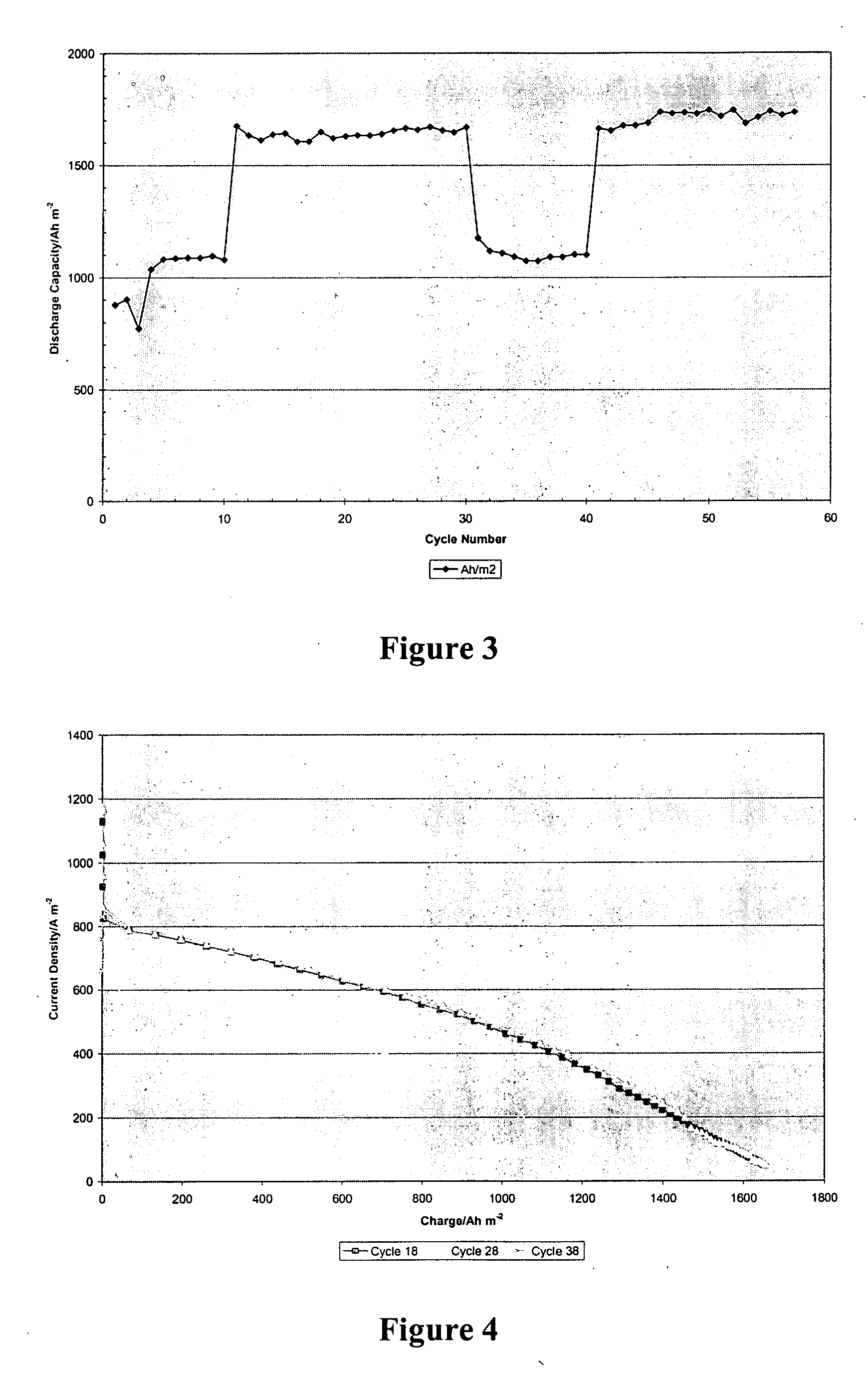Battery with bifunctional electrolyte
a battery and electrolyte technology, applied in the field of batteries, can solve the problems of mercury oxide toxicity, poor power-to-weight ratio of commonly used zn/c batteries, and even more problems, and achieve the effect of increasing solubility
- Summary
- Abstract
- Description
- Claims
- Application Information
AI Technical Summary
Benefits of technology
Problems solved by technology
Method used
Image
Examples
Embodiment Construction
[0020] The inventors have discovered that a battery may be produced in which an acid electrolyte has compound that provides (a) acidity to the electrolyte, and (b) increases the solubility of at least one metal ion of the metals that form the redox pair. Solubility is preferably increased via complex or salt formation. Viewed from another perspective, the inventors discovered that compounds that increase solubility of selected metals (and especially in ionic form) in the electrolyte will advantageously allow use of redox couples that would otherwise be regarded unsuitable redox couples in a battery (and particularly a secondary battery) having an acid electrolyte.
[0021] As used herein, the term “acid electrolyte” refers to an electrolyte (i.e., a solution that conducts electricity) having a pH of less than 7.0, and more typically of less than 4.0. As also used herein, the term “redox pair” is interchangeably used with the term “redox couple” and refers to a combination of a first e...
PUM
| Property | Measurement | Unit |
|---|---|---|
| open circuit voltage | aaaaa | aaaaa |
| open circuit voltage | aaaaa | aaaaa |
| voltage | aaaaa | aaaaa |
Abstract
Description
Claims
Application Information
 Login to View More
Login to View More - R&D
- Intellectual Property
- Life Sciences
- Materials
- Tech Scout
- Unparalleled Data Quality
- Higher Quality Content
- 60% Fewer Hallucinations
Browse by: Latest US Patents, China's latest patents, Technical Efficacy Thesaurus, Application Domain, Technology Topic, Popular Technical Reports.
© 2025 PatSnap. All rights reserved.Legal|Privacy policy|Modern Slavery Act Transparency Statement|Sitemap|About US| Contact US: help@patsnap.com



